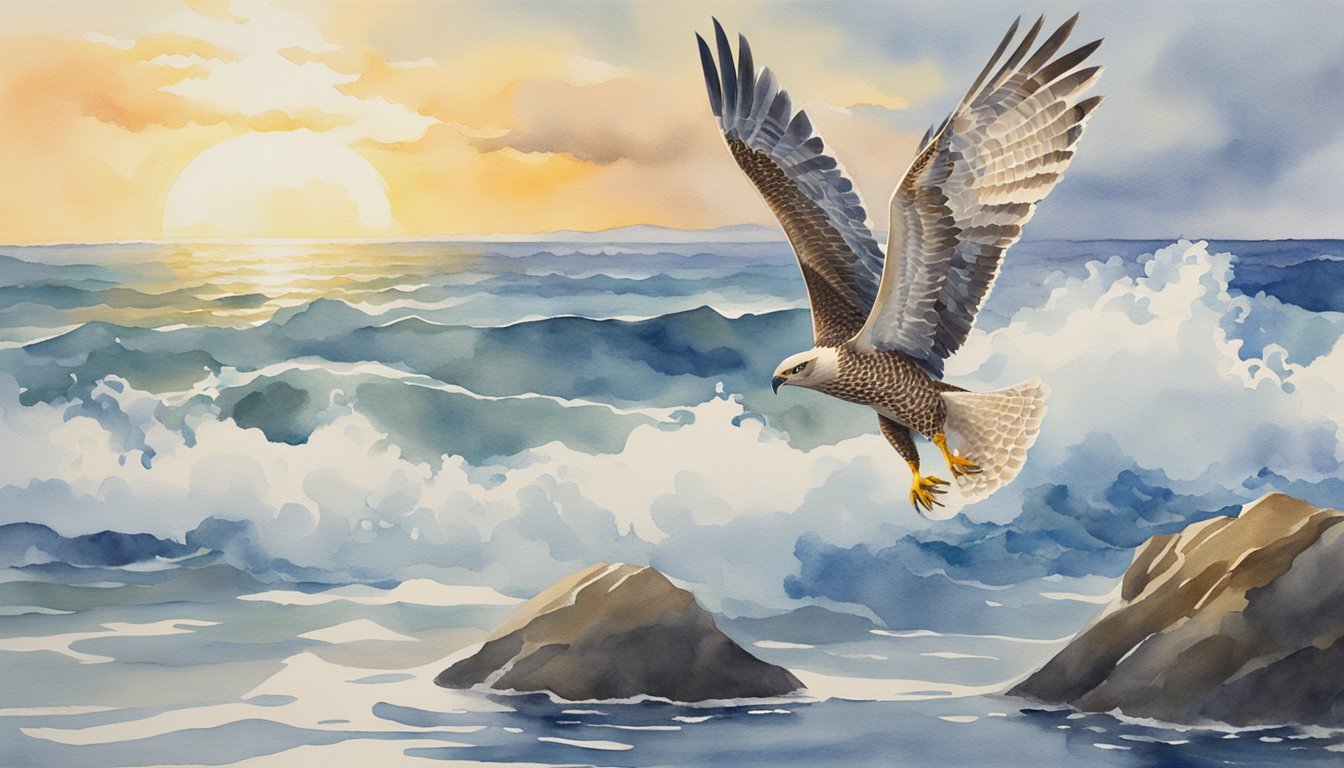Sea Hawk: Identification and Species Profile

The term “sea hawk” often refers to the osprey, a unique raptor known for its fishing prowess and global distribution. This section explores the defining traits and behaviors of this species.
Physical Characteristics
Ospreys are impressive birds of prey with a wingspan reaching up to 71 inches. They have brown upperparts and greyish head and underparts. Their eyes are sharp for spotting prey from afar, and they possess powerful talons and a hooked bill designed for grasping fish. Details on their size and identification features are found in their Wikipedia description.
Habitat and Distribution
Ospreys can be found near coastlines as well as by rivers and lakes across every continent except Antarctica. They thrive in regions ranging from the Southeast of North America to the rivers of India, adapting easily to their proximity to water.
Feeding Habits and Prey
These raptors are specialized fish-eaters, often seen diving into water bodies to catch fish. Ospreys have unique hunting skills and a diet mainly consisting of fish, but they also occasionally capture other birds or small mammals. Insights into their diet are provided by Bird Advisors.
Reproductive Behavior and Lifecycle
Ospreys typically mate for life. The female lays eggs, and both parents take turns caring for them. The young are called juvenile ospreys and they remain in the nest for about eight weeks before their first flight. Their migratory patterns and life stages are a focus for wildlife observers.
Conservation Status and Challenges
The osprey has made an extraordinary recovery since the detrimental effects of DDT in the 1940s. Conservation actions have led to the rebound of their populations, and they are now listed as a species of Least Concern by the U.S. Fish and Wildlife Service.
Cultural Significance and Symbolism
Sea hawks hold a place in sports and native cultures, notably as the mascot for the Seattle Seahawks and in the traditions of the Kwakwaka’wakw Nation. Their image symbolizes keen vision and the ability to navigate challenging environments.
Scientific Research and Studies
Researchers focus on the osprey’s keen eyesight and migratory behavior. Studies on these raptors contribute to our understanding of species adaptation and the health of aquatic ecosystems. Biologists and ornithologists continue to investigate the nuances of their ecology.
Mythology and Folklore
References to the osprey date back to the works of William Shakespeare and beyond, with roots in Medieval Latin as “avis prede” meaning “bird of prey”. The etymology of their scientific name, Pandion haliaetus, also holds significance rooted in ancient tales and the natural history of this captivating bird.
Sea Hawk in Popular Culture

The Sea Hawk’s cultural influence extends from sports to literature, demonstrating its symbolic power across various platforms.
Sports Mascots and Branding
The Seattle Seahawks, an NFL team, have embraced the sea hawk, specifically an augur hawk named Taima, as part of their branding and identity. The team’s logo is inspired by the bird of prey and is a point of pride for fans, especially during high-stakes games like the Super Bowl. Across sports, the sea hawk motif is synonymous with agility and strength, contributing significantly to team identities.
Literature and Media Portrayals
In literature, “The Sea Hawk” is a title of a novel by Rafael Sabatini, which was adapted into a classic Hollywood film in 1940 starring Errol Flynn. The movie has significantly shaped the portrayal of swashbuckling adventures in popular culture. Additionally, the bird of prey has been featured or referenced in various media forms, cementing its presence in literature and film. For instance, in Miami, Shakespeare’s script might allude to a sea hawk or other powerful birds of prey as metaphors for strength and freedom in the English narrative tradition.
Art and Heraldry
Heraldic art and symbols often feature the sea hawk, especially within the traditions of the Kwakwaka’wakw nation and other indigenous cultures, where it’s celebrated as a totem. In English heraldry, the bird, sometimes confused with the eagle, appears on crests and shields, signifying nobility, courage, and foresight. Bald eagles, which are often colloquially called sea hawks, similarly appear in American symbolism and art, representing the nation’s ideals and identity.

